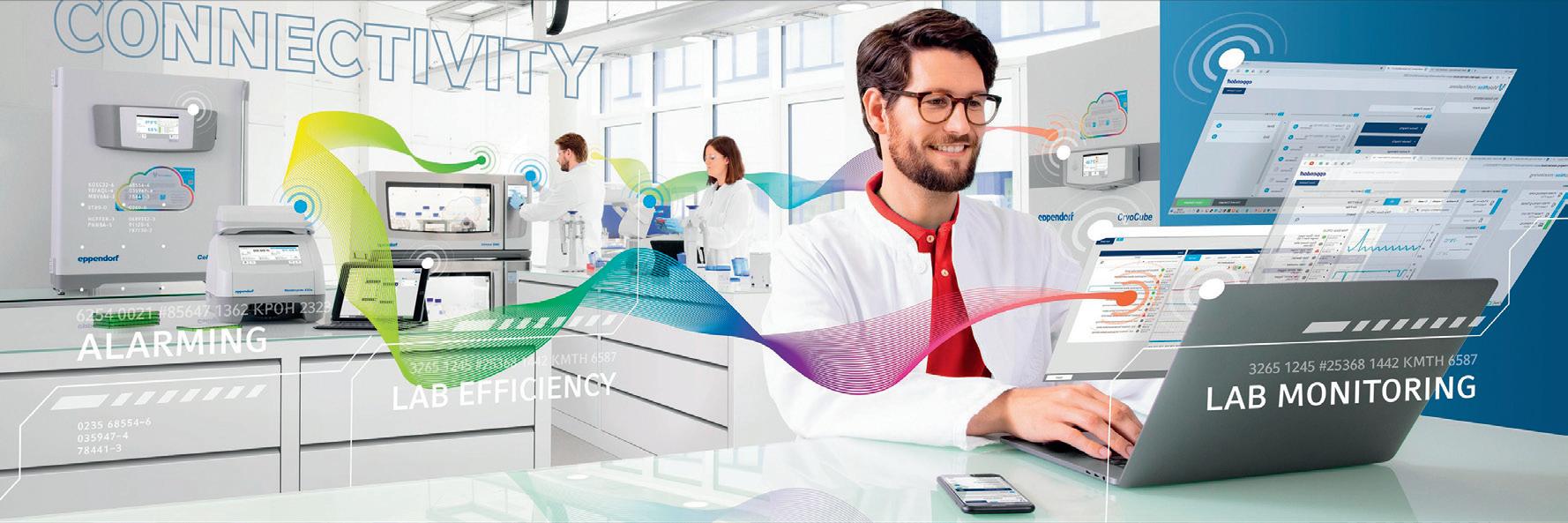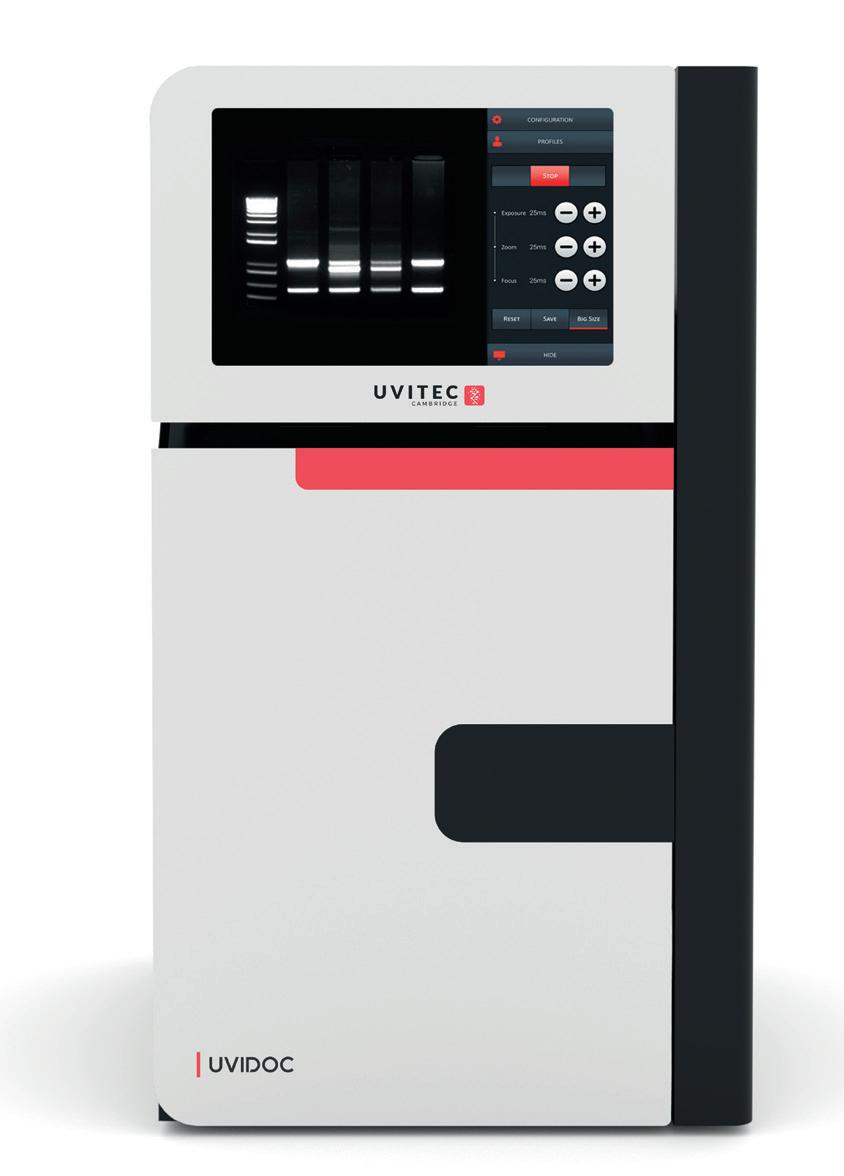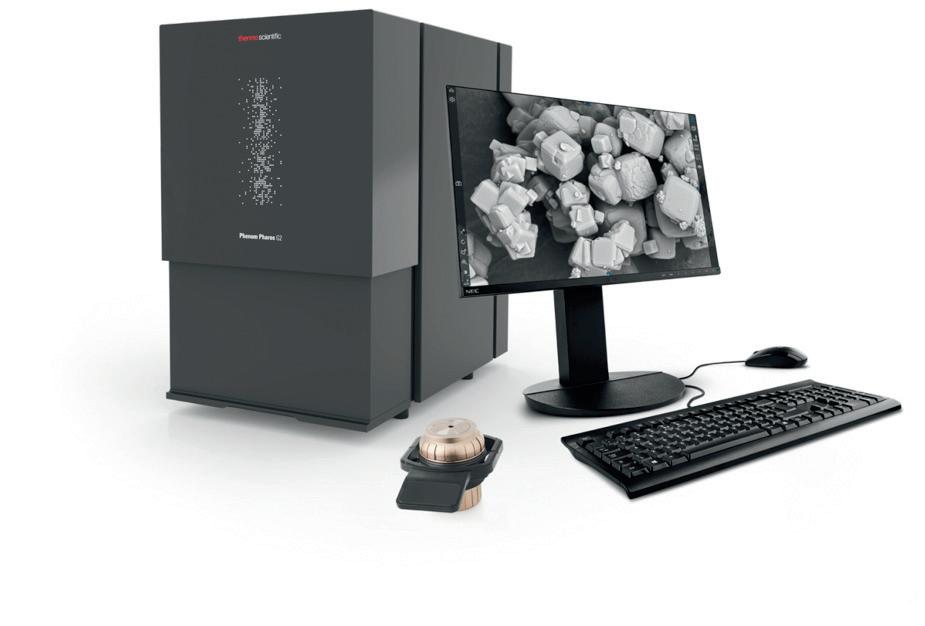
8 minute read
WHY RUGGED LAPTOPS ARE A GOOD ALTERNATIVE IN LABORATORIES
Laboratories take various forms; however, they tend to have in common the importance of gathering accurate, comprehensive data. This means that lab workers need tools that let them collect and analyse data in a way that’s reliable and robust enough to withstand the sometimes harsh, dangerous or stringent conditions of the lab they’re working in.
Working with consumer-grade tools can often leave lab workers frustrated or stymied because those tools aren’t purpose-built for the lab environment. Rugged devices can fill this gap and let workers get on with their core tasks. Each lab has unique working conditions, from the requirement for sterility in cleanrooms to the need for strict safety protocols in labs that handle hazardous material. Not having appropriate equipment can mean that lab results and outcomes are incorrect. It can add a significant burden to the employees’ workday or, in the worst-case scenario, it could even contribute to an increased risk of injuries.
In a lab, workers run the risk of spilling liquids or solids onto their devices. Hazardous fumes could also affect the device’s ability to operate, along with temperature extremes and the ever-present danger of drops, knocks and shocks. Lab workers who wear gloves can find it challenging to use touchscreens effectively. And, if there are no charging stations nearby, workers can find their devices run out of battery before they run out of work to do.
Rugged devices offer enhanced functionality and resilience compared to standard machines. In turn, this means long-term cost savings and superior employee productivity. This technology is no longer exclusive to construction or engineering fields; a range of industries are now choosing rugged devices for various reasons. Primarily, rugged laptops withstand harsh and extreme conditions without sacrificing performance or connectivity.
©stock.adobe.com/au/Alexander Borisenko
Extensive durability: drops, knocks and shocks Rugged devices are solid and durable, withstanding conditions ordinary devices can’t. While consumer devices tend to struggle in anything other than optimal conditions, rugged devices take rain, humidity, strong wind, dust, moisture and other requirements in their stride.
For example, workers can operate rugged devices with wet or gloved hands. On any standard device, this could cause serious functionality problems. Additionally, most people have experienced the dismay when a consumer device is dropped even from a modest height. The cracked screen can be expensive to repair and compromises the worker’s ability to continue working effectively while fixing the device.
Even with tough covers and screen protectors, consumer devices just aren’t meant to handle such rough treatment. But, with heightened toughness built in from the ground up, rugged devices easily endure the impacts, shocks, drops, moisture and heat extremes that can happen in laboratory facilities.
By withstanding such a harsh environment, a rugged device offers long-term cost savings and efficiencies through not having to be replaced or repaired anywhere near as often as consumergrade devices.
Easy to keep sterile without comprising performance Having a clean work environment translates to a safer, more efficient workforce. Keeping spaces clean and organised is one thing; however, when it comes to devices, it can be challenging to ensure they’re cleaned to the lab’s specifications to avoid cross-contamination. Users can carefully wipe down consumer-grade devices, but rugged devices can be thoroughly and comprehensively cleaned with relevant chemicals to ensure proper cleanliness and sterilisation. This helps prevent cross-contamination in the lab environment and limit the spread of infections such as COVID-19.

Staying connected to enhance productivity Devices need to remain connected to the internet to be helpful in laboratories. Real-time data transfer, remote logging and low latency can enhance lab operations. A rugged laptop will maintain connectivity for streamlined processes even when moving around the facility or from clean or cold rooms to warm, humid environments. This helps improve productivity and means there is no annoying delay in communications.
Maintaining compliance and safety Most labs work within complex regulatory compliance requirements, including the need to keep data secure. It’s essential to choose devices that go beyond traditional consumer-grade security. A robust approach is to start with rugged devices that are easily customisable to meet current and future security needs. This includes protecting communications across cellular, Wi-Fi and other networks, including cloud backhauls. Reduced total cost of ownership Rugged devices are often more expensive upfront in comparison to consumer-grade devices. Rugged devices, however, suffer far fewer damages, breakages or downtime. This means the total cost of ownership, including support and repair costs, will be significantly cheaper.
Because rugged devices also boast superior endurance, labs can spend less money on replacing devices, which is often more frequently necessary for consumer devices. Zero downtime has other benefits as well. With less wasted employee time due to device issues, workers can focus on valuable tasks that make a difference.
Long battery life A common complaint with consumer-grade devices is their relatively short battery life. Rugged laptops include long battery life even with peak usage. These devices also have hot-swappable batteries so workers can keep productive without having to stop to recharge their device, become tethered to a charging device that’s plugged into a wall socket or change devices altogether. This means rugged laptops can keep up with the longest days in the lab.
What to look for in a rugged device Rugged laptops should be built from the ground up to be rugged, rather than have ruggedised features added. They should come with various accessories, including mounting kits, mobile power supplies, security and connectivity software.
The ideal rugged laptop should be independently certified to comply with militarygrade standards while keeping users connected and secure. This includes the ability to withstand blasts, moisture, dust, shocks and vibration.
Large screens and sunlight-readable displays should come as standard to make rugged laptops easy to work with. They should also feature easy access to protected connections and ports, which can be covered to prevent foreign matter from entering the computer.
With the proper rugged laptops, labs and lab workers can confidently work in even the most extreme environments without concerns about the equipment’s ability to keep up in the long term. This makes rugged laptops the ideal tool for the laboratory of the future.

Smart lab management software
To meet more needs and overcome challenges in laboratories worldwide, Eppendorf offers a smart lab management software solution: the VisioNize Lab Suite.
The SARS-CoV-2 pandemic has impacted the operation of laboratories, including the adoption of digital technologies to cope with the new norms of social distancing, working remotely and restricted access to lab benches. These past months have proven that digitalisation is central in every interaction — whether on an individual or organisational level — and this has fast-tracked the acceptance of digital solutions.
Within a single cloud platform, VisioNize Lab Suite users may gain access to a modular range of services that can be activated to suit the needs and workflow of the laboratory. The product is designed to be a vendor-agnostic solution with connectivity to Eppendorf and third-party devices, making it a sustainable investment for digital transformation.
VisioNize Lab Suite provides the ability to connect lab devices and archive device data, so all relevant documents such as SOPs and operating manuals for lab instruments are available at the user’s fingertips. Remote monitoring enables device parameters and status to be checked from anywhere at any time, while alarm notifications are available in the event of instrument error and safeguard against sample loss. Users can also schedule one-time or recurring maintenance tasks for all lab instruments, including receiving notifications when service maintenance/calibration is due.
Eppendorf South Pacific Pty Ltd www.eppendorf.com.au
Gel documentation system
A standalone platform and voice-controlled DNA/protein gel workstation, the Uvidoc HD6 is suitable for crowded labs where automation, ease of use and high sensitivity are required. Featuring a real onboard computer and a large 12.2″ HD touch screen, the product’s Voice Control option allows for powerful system operation, speed and user-friendliness.
The product’s 26 x 21 cm field of view is suitable for larger samples, with 6 million pixels offering high-quality, publication-level images. It has responsive 6x zoom optics for a versatile imaging area and is designed to feature reduced noise for clearer images from the passive cooling system.
The system has a slide-out tray for hassle-free sample positioning and one-touch imaging for quick, effortless acquisition. Uvipure technology is designed to enable enhanced UV for EtBr and all safe stains. Other features include a three-position filter wheel and up to 18 filter options.
Thermo Fisher Scientific thermofisher.com

Desktop FEG-SEM

While optical and conventional (tungsten) scanning electron microscopes (SEM) provide high-resolution imaging for many types of samples, only a field emission SEM can reveal the fine details.
The morphology of nanoparticles, small defects in thin films, insulating materials, or materials sensitive to highenergy electron beams can be adequately studied using a field emission SEM. However, these systems are known to be large, often requiring a dedicated room while also requiring special infrastructure and connections. Additionally, they can be difficult to master.
As a result, many institutions that own a field emission SEM will restrict its use to highly trained personnel. Many research groups, departments or companies outsource their FEG SEM needs to service labs or central facilities to avoid these inconveniences. The Phenom Pharos G2 Desktop FEG-SEM overcomes these challenges.
The FEG-SEM offers floor-model performance on a desktop microscope, with loads of added benefits that make it fast and easy to operate. The desktop Phenom Pharos enables research groups or companies to own their own FEG-SEM and no longer rely on external services. A (solid) table and a regular power outlet are all that are needed to install it. In <30 s after sample loading, full-screen, high-quality images are presented on a wide 24″ monitor at 2 nm resolution and acceleration voltage up to 20 kV. Users can also image soft, beam-sensitive or insulating samples at energy levels as low as 1 kV without the need to apply a coating.
The Phenom Pharos G2 Desktop FEG-SEM also offers multiple fully integrated detectors. A secondary electron detector (SED) is optimal for applications where topography and morphology are important, while the energy-dispersive spectroscopy (EDS) detector provides comprehensive elemental analysis.






